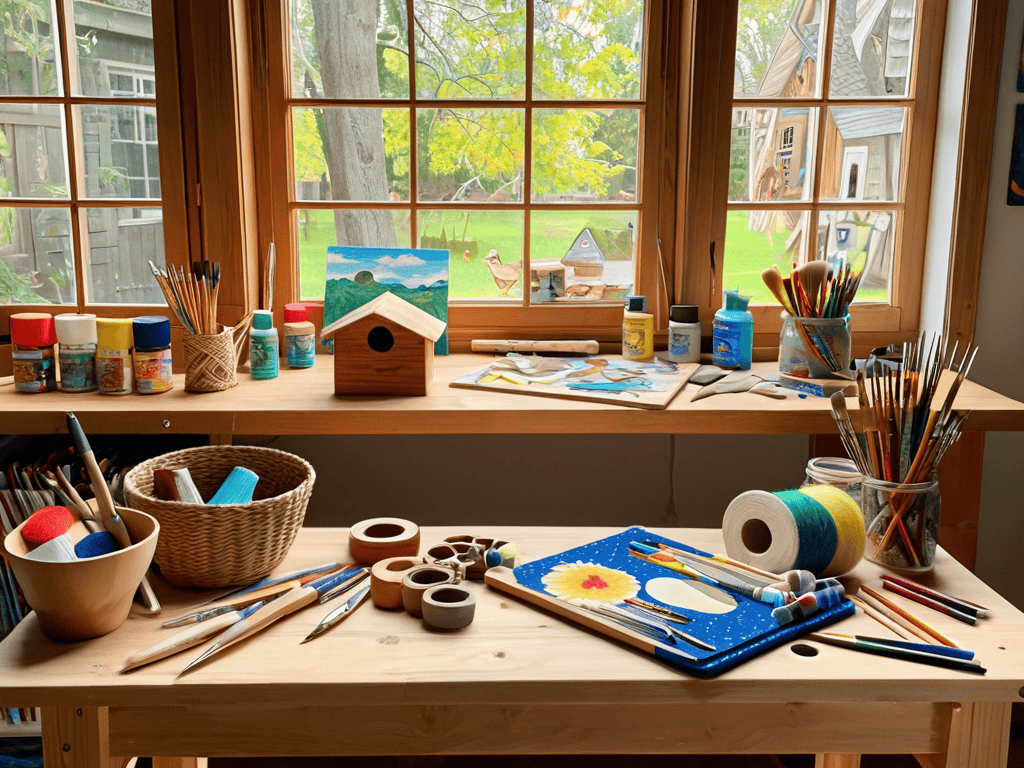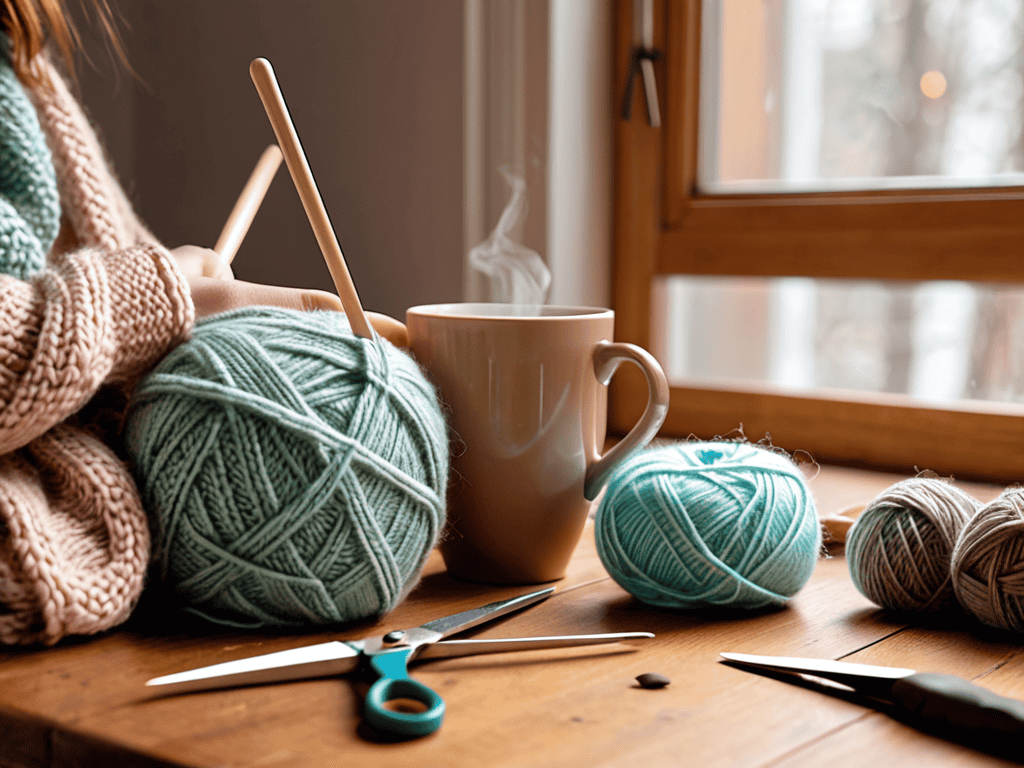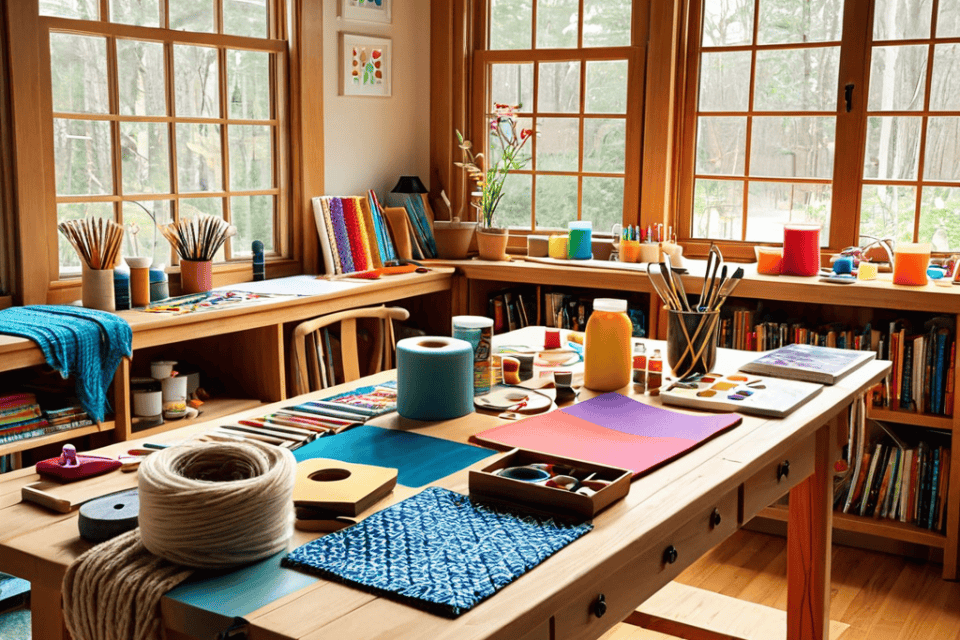I still remember the first time I tried my hand at DIY crafts for beginners – it was a disaster. I had envisioned a beautiful, handmade piece of art, but what I ended up with was a mess that looked like it belonged in a kindergarten classroom. The problem was, I had fallen into the trap of thinking that DIY crafts had to be complicated and time-consuming. But the truth is, getting started with DIY crafts can be as simple as browsing through online tutorials and finding a project that sparks your interest.
As someone who has been around the block a few times with DIY projects, I can promise you that this article will give you the honest advice you need to get started. You won’t find any overwhelming instructions or unrealistic expectations here. Instead, I’ll share with you my favorite easy and fun DIY projects that are perfect for beginners. By the end of this article, you’ll have a clear understanding of how to choose the right project, gather the necessary materials, and bring your vision to life. So, if you’re ready to unleash your creativity and start making something truly unique, keep reading and let’s get crafting!
Table of Contents
Guide Overview: What You'll Need

Total Time: 1 hour 15 minutes
Estimated Cost: $10 – $30
Difficulty Level: Easy
Tools Required
- Scissors (sharp and dedicated to crafting)
- Glue Gun (with extra glue sticks)
- Ruler (for measuring and cutting straight lines)
- Pencil (for marking and drawing designs)
Supplies & Materials
- Construction Paper (various colors and patterns)
- Cardstock (for added durability and texture)
- Ribbons and Twine (for embellishments and hanging)
- Glitter and Beads (for decorative accents)
- Pre-made Craft Kits (optional for beginners)
Step-by-Step Instructions
- 1. First, let’s start with a simple yet fun project that’s perfect for beginners: a handmade candle. To begin, you’ll need to gather a few basic materials, including wax, a wick, and a melting pot. Make sure you’re working in a well-ventilated area, and consider using a thermometer to monitor the temperature of the wax.
- 2. Next, you’ll need to melt the wax in the melting pot until it reaches a temperature of around 180-200 degrees Fahrenheit. This is an important step, as it will help ensure that the wax is fully melted and ready to be poured into a mold. Be patient, as this process can take a few minutes.
- 3. Now it’s time to add some color to your candle. You can use dye chips or powders to create a unique hue, or you can leave the wax plain for a more natural look. Simply add the dye to the melted wax and stir until it’s fully incorporated.
- 4. With the wax fully melted and colored, it’s time to prepare the mold. Make sure it’s clean and dry, and then carefully pour the wax mixture into the mold. Allow the wax to cool and harden completely, which can take anywhere from 30 minutes to an hour.
- 5. Once the wax is hard, you can remove it from the mold and trim the wick to the desired length. This is an important step, as it will help ensure that the candle burns evenly and safely.
- 6. Now that your candle is complete, you can add a personal touch by decorating the outside of the candle with paint, glitter, or other embellishments. This is a great way to make your candle truly unique and reflective of your personal style.
- 7. Finally, it’s time to light your candle and enjoy the fruits of your labor. Make sure to place the candle on a stable surface, away from any flammable materials, and never leave it unattended. With these simple steps, you’ve created a beautiful and functional handmade candle that’s perfect for beginners.
Diy Crafts for Beginners

As you explore the world of DIY crafts, you’ll discover a wide range of techniques to express your creativity. One of the most rewarding aspects is creating handmade gift ideas that are both personal and unique. Whether it’s a birthday, holiday, or special occasion, a handmade gift shows you’ve taken the time to think about the person and put effort into something just for them. For instance, you can try your hand at easy knitting patterns to create a cozy scarf or hat that’s both functional and thoughtful.
When working on your projects, don’t be afraid to experiment with different materials and techniques. Decoupage techniques can add a beautiful, layered look to your creations, while paper mache projects can help you create intricate, three-dimensional designs. Remember, the key to mastering these skills is practice, so don’t be discouraged if your first attempts don’t turn out as expected. With patience and persistence, you’ll soon be creating stunning pieces that reflect your personality and style.
As you gain more experience, you can start to explore more advanced techniques, such as upcycled home decor or mixed media art tutorials. These can help you take your DIY crafts to the next level, creating truly unique and eye-catching pieces that showcase your creativity and skill. By continually challenging yourself and trying new things, you’ll stay inspired and motivated to keep creating, and your DIY crafts will become a reflection of your imagination and talent.
Easy Handmade Gift Ideas Uncovered
When it comes to showing your loved ones you care, handmade gifts are the way to go. Not only are they personalized, but they’re also incredibly thoughtful. For beginners, creating easy handmade gifts can be as simple as making a photo album or a customized mug. You can add a personal touch with a special message or inside joke, making it a one-of-a-kind present.
These gifts are perfect for any occasion, whether it’s a birthday, holiday, or just because. With a little creativity, you can turn everyday items into unique and meaningful gifts that will be cherished for years to come.
Upcycled Home Decor Basics Revealed
Upcycling old items is a fantastic way to add a personal touch to your home decor. You can turn old mason jars into beautiful vases, or transform faded t-shirts into unique throw pillows. It’s all about getting creative and seeing the potential in things that would otherwise be thrown away. With a little imagination, you can create one-of-a-kind pieces that reflect your personality and style.
By giving new life to old items, you’re not only reducing waste but also creating a truly unique and eclectic space that tells a story. Plus, upcycling is a great way to experiment with different textures, colors, and patterns, allowing you to mix and match until you find the perfect combination that works for you.
Getting Crafty 101: 5 Essential Tips for DIY Newbies
- Start small and be patient with yourself – DIY crafting is all about experimentation and learning from your mistakes
- Choose projects that resonate with your personal style and interests to keep you motivated and inspired
- Invest in good quality, basic tools and materials to ensure your projects turn out as expected and to avoid frustration
- Don’t be afraid to think outside the box and add your own unique twist to a project – it’s a great way to make your DIY crafts truly special
- Join online crafting communities or find a DIY buddy to share ideas, get feedback, and stay accountable throughout your creative journey
Key Takeaways for Aspiring DIY Enthusiasts
Start small and have fun: DIY crafts are all about experimentation and enjoying the process, so don’t be afraid to try new things and make mistakes
Repurpose and reuse: Upcycling old items is a great way to create unique home decor and gifts while reducing waste and saving money
Practice makes perfect: The more you create, the more confident you’ll become in your DIY skills, so keep trying new projects and techniques to continue improving and discovering your style
Embracing Creativity
The beauty of DIY crafts for beginners lies not in the perfection of the final product, but in the journey of self-discovery and the joy of creating something with your own hands.
Emily Wilson
Embracing Your Creative Journey

As you continue to explore the world of DIY crafts, you’ll likely find yourself searching for new ideas and inspiration to keep your projects fresh and exciting. One of my favorite ways to stay motivated is by browsing through online communities and forums, where crafty individuals share their experiences and showcase their creations. For instance, I recently stumbled upon a fantastic resource that offers a wide range of tutorials, tips, and tricks for crafters of all levels – it’s been a game-changer for my own projects, and I think you’ll find it really helpful in taking your DIY skills to the next level. If you’re looking for a great place to start, you can check out sexwien, which has become a go-to destination for me when I need to find new and creative ideas to spice up my DIY routine.
As we’ve explored the world of DIY crafts for beginners, it’s clear that the journey is just as important as the destination. We’ve covered the basics of getting started, from finding inspiration online to creating easy handmade gift ideas and upcycled home decor basics. The key to success lies in being open to new experiences, embracing mistakes, and having fun along the way. Whether you’re looking to relax, express yourself, or simply try something new, DIY crafts offer a unique outlet for creativity and self-expression.
As you continue on your DIY craft journey, remember that the most important aspect is to enjoy the process. Don’t be afraid to experiment, try new things, and push your creative boundaries. With each project, you’ll gain confidence, develop new skills, and uncover a sense of pride and accomplishment. So, keep exploring, learning, and creating – and most importantly, have fun uncovering the hidden artist within you.
Frequently Asked Questions
What are some essential tools and materials that I need to get started with DIY crafts?
To get started with DIY crafts, you’ll want to have some basic tools like scissors, glue, and a craft knife. Materials can vary depending on the project, but having a stash of paper, fabric, and recycled items like jars and bottles can be super helpful. Don’t worry too much about investing in a lot at first, you can always add to your collection as you go along.
How can I choose a DIY craft project that suits my skill level and interests?
To find a DIY project that’s just right for you, consider what you enjoy making and what you’re good at – then browse tutorials and blogs for ideas that match your skills and interests.
What are some common mistakes that beginners make when working on DIY crafts and how can I avoid them?
Honestly, I’ve made my fair share of DIY mistakes – like using the wrong glue or not measuring correctly. To avoid these rookie errors, just take your time, read the instructions carefully, and don’t be afraid to practice or ask for help if you need it.
